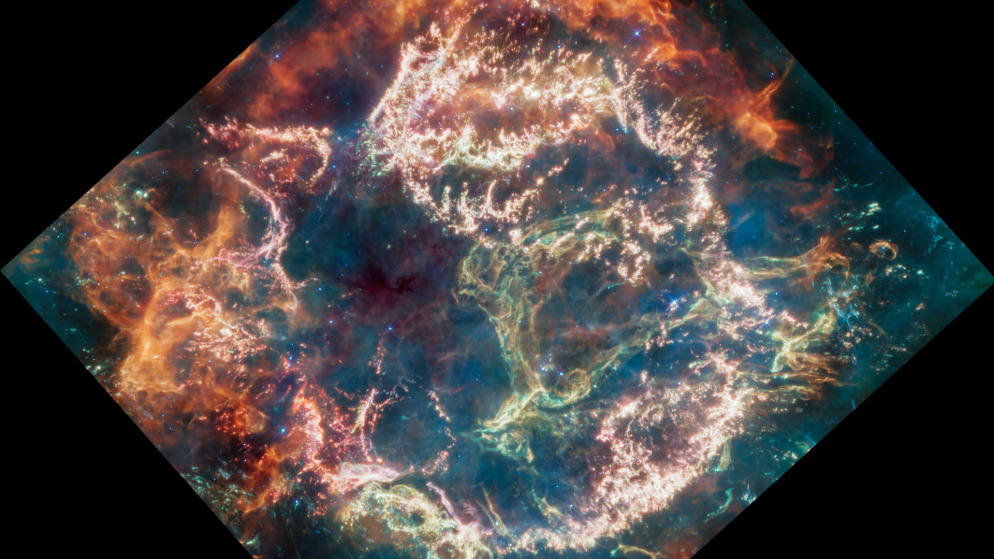The ‘Green Monster’: A Closer Look at the Youngest Known Supernova Remnant in the Milky Way

New images from the James Webb Space Telescope have shed light on the enigmatic ‘Green Monster,’ the youngest known supernova remnant in our galaxy. This groundbreaking discovery reveals the detailed debris field of the Cassiopeia A supernova, providing scientists with valuable insights into the stellar explosion that occurred 340 years ago.
Located 11,000 light-years away in the Cassiopeia constellation, Cassiopeia A has captivated astronomers since the first X-rays were detected in the 1960s. However, it wasn’t until the James Webb Space Telescope captured the infrared images that the true complexity of the supernova remnant became apparent. The vibrant green, pink, and orange hues in the images represent different wavelengths of infrared light, which are invisible to the human eye.
According to Danny Milisavljevic, an assistant professor of physics and astronomy at Purdue University and the principal investigator of the Webb program, “Cas A represents our best opportunity to look at the debris field of an exploded star and run a kind of stellar autopsy to understand what type of star was there beforehand and how that star exploded.”
The new images reveal intriguing details about the supernova remnant. Orange and red hues represent warm dust, which is expanding outward in a bubble-like shape. The bright pink filaments within this bubble contain stellar debris, including argon, neon, oxygen, and more dust. Tea Temim, an astronomer at Princeton University and a co-investigator on the program, noted that these images offer unprecedented detail, allowing scientists to analyze the event like never before.
The most striking feature of the images, however, is the ‘Green Monster’ – a prominent green filament winding through the central cavity of the bubble. Researchers are still trying to understand the structure and complexity of this mysterious phenomenon. The ‘Green Monster’ is riddled with mini-bubbles, adding to its enigmatic nature.
By studying Cassiopeia A, astronomers aim to unravel the origins of the universe’s dust. Although it is known that supernovae contribute significantly to dust formation, scientists have yet to fully trace the origins of all the dust observed in the early universe.
In the words of Milisavljevic, “By understanding the process of exploding stars, we’re reading our own origin story. I’m going to spend the rest of my career trying to understand what’s in this data set.” The ‘Green Monster’ may be perplexing, but its discovery offers a unique opportunity to delve deeper into the mysteries of our galaxy and beyond.
0 comments